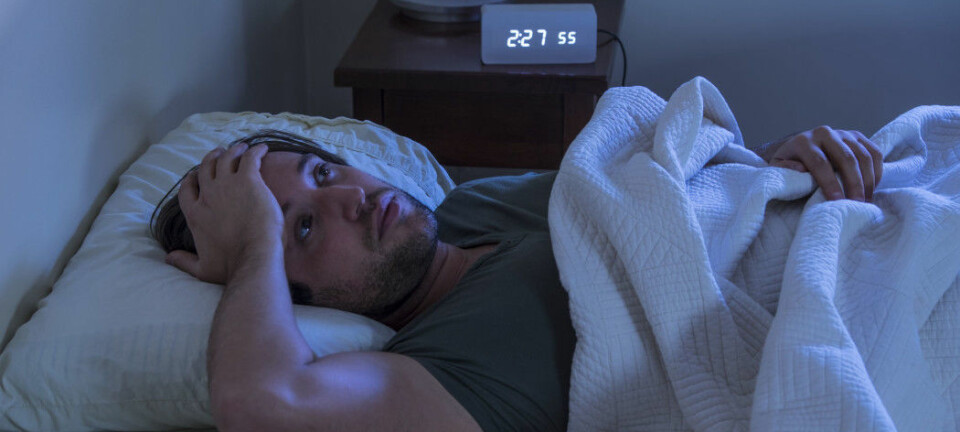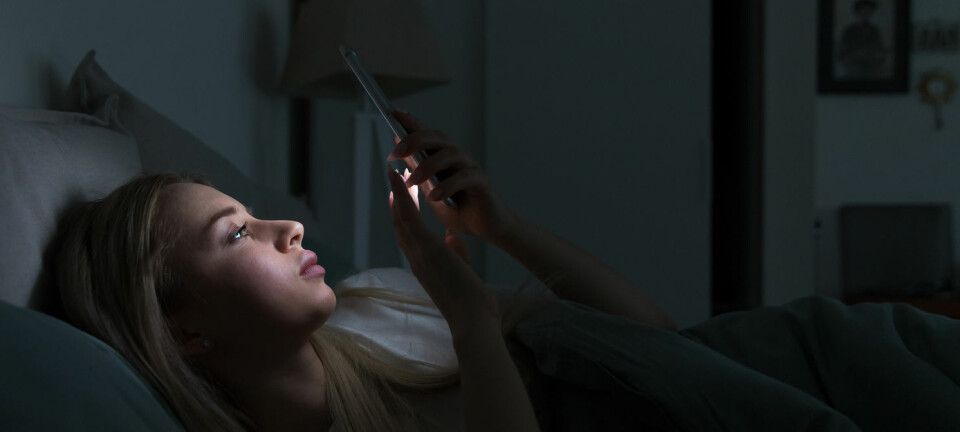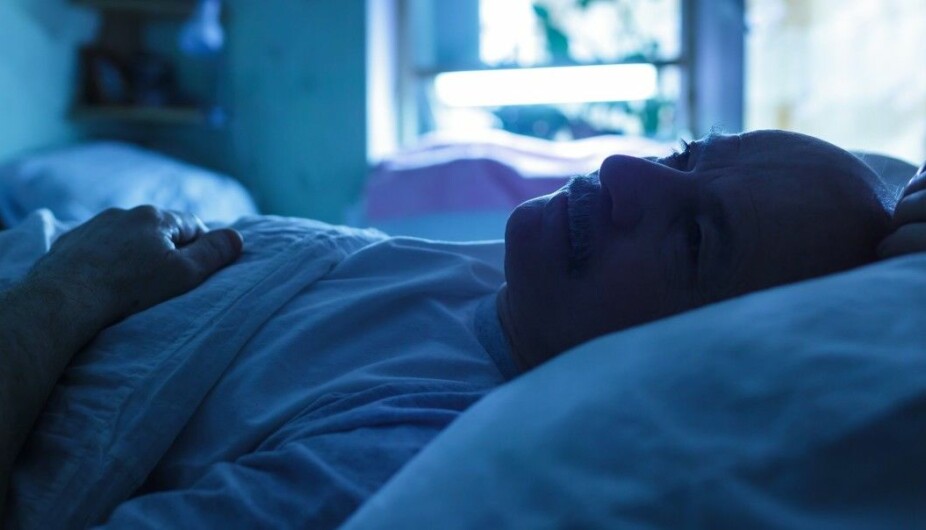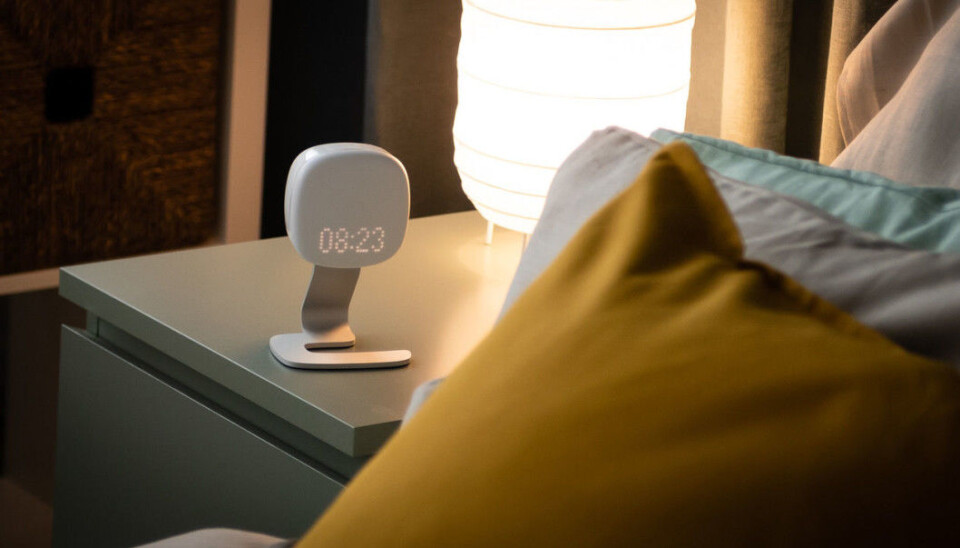
A new Norwegian sensor will help you sleep better when your sleep is being monitored
The new Norwegian-developed sleep sensor means that a study subject doesn’t have to sleep with sensors on his or her body. In addition, the fact that it is contactless solves a problem related to the coronavirus crisis, says a Norwegian sleep scientist.
Somnofy Research is a monitor that measures sleep quality and quantity, and at 30-second intervals, records which sleep phase you are in.
The monitor records four sleep phases: awake, light sleep, deep sleep and REM sleep.
Somnofy has just been evaluated by the University of Bergen (UiB) and the Norwegian University of Science and Technology (NTNU) in what is called a validation study. A validation study involves comparing a new method with an old method.
“Our validation study is a fundamental, comprehensive study of whether there is a correspondence between this measurement method and what is considered the gold standard,” said Ståle Pallesen said in a press release. Pallesen is a professor and sleep scientist at UiB, and one of the researchers behind the validation study, which has now been published in the journal Sleep Medicine.
According to the press release, the validation study was one of the most comprehensive ever done on a contactless sleep monitor. The new sleep sensor is also said to be the best alternative to polysomnography (PSG), which is currently considered the best method in the field.
“This is the best alternative to PSG as I see it today,” says Pallesen in the press release.
PSG, or polysomnography, is a method that measures sleep quality, quantity and various sleep stages, among other things, with great accuracy. That’s why the PSG method is seen as the ideal, or gold standard, for sleep studies.
Exact — but many sensors
The PSG method is known to be accurate, but we believe it also has some sources of error, says Alf-Egil Bogen. Bogen is co-founder of the VitalThings company, which developed Somnofy.
“When it comes to measuring sleep phases, you have to have sensors in many places on your head. These measure brain waves to see that you have fallen asleep and also to record brain activity,” he says to sciencenorway.no.
“There are also belts around your body to measure breathing through the abdomen and chest, and there are sensors on the eyelids for eye movements, and on the legs — and sensors for flow, meaning air currents. So you have a lot of sensors” with the PSG system, Bogen says.
He added that the PSG method is used to diagnose sleep disorders, and that the algorithms in Somnofy Research are "trained" to detect sleep, awakening, sleep phases and movements based on what has been learned from PSG. He emphasizes that PSG provides more detail, which allows practitioners to make specific sleep disorder diagnosess.
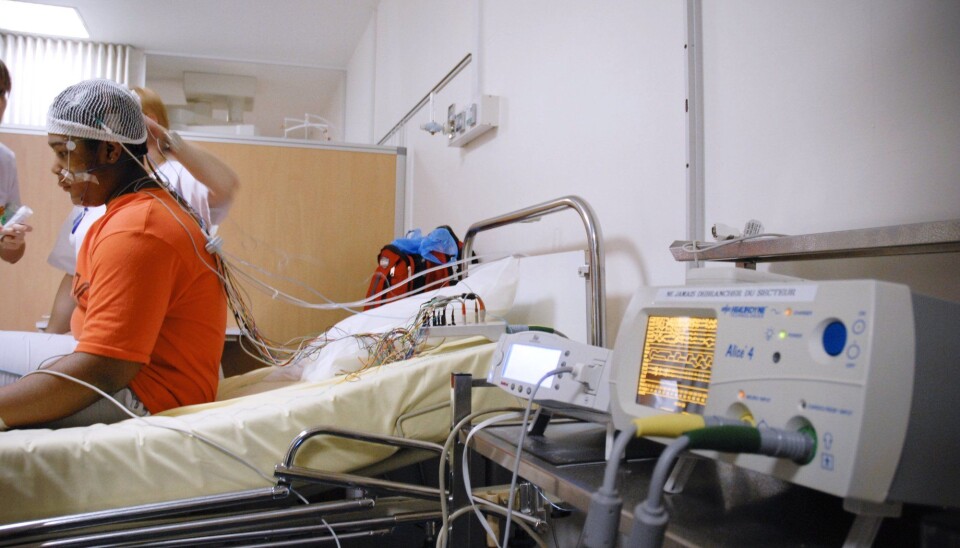
Doesn’t require physical contact
“What we have is a contactless monitor. There is nothing on the body,” says Bogen. He says that the built-in sensors measure movements and breathing very accurately.
Bogen says that the new sleep sensor also measures sound, light, humidity and air quality in the room where you sleep.
“There’s a big difference compared to PSG, because you can lie down without anything on your body and in your own bed. There are quite a few sources of error with professional equipment; you sleep less when you wear it, and you may have to wear it for quite a few nights. So you don’t get much of a representative picture of time and variation in times,” says Bogen.
Used by Olympiatoppen
Olympiatoppen, an organization that is part of the Norwegian Olympic and Paralympic Committee and Confederation of Sports, participated in the validation study and to determine how well Somnofy works in practice. The organization has already used it for some time.
"By using Somnofy, we get high quality data on top athletes' sleep quality and quantity in a simple and reliable way," Frode Moen said in the press release. He is head of Olympiatoppen’s division in Trondheim.
“It gives you the opportunity to test many individuals over a longer period, and perhaps groups of people who are otherwise difficult to test using other equipment. This means, for example, that Olympiatoppen can use it and athletes can take it with them when they travel — they can use it every single day without thinking about it,” Bogen points out.
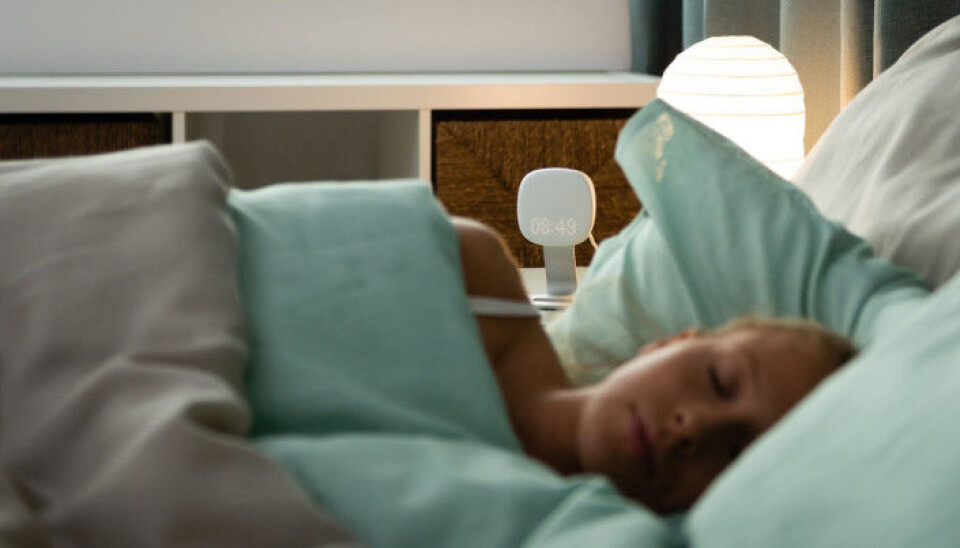
Solves the coronavirus problem
Sleep scientist Ståle Pallesen points out that a contactless system has an important advantage these days.
“My impression is that several research projects are now on hold because you need to get people physically into the lab and that you need to have one-on-one physical contact in order to record and collect data. The device we have validated is contactless in use, and in addition, the data are sent straight into the cloud. Participants can thus be in their own homes and still contribute data to the project,” Pallesen said in the press release.
Interest in the product has been great in connection with the coronavirus crisis, Bogen says.
“Clearly, distance monitoring is more relevant than ever. Being able to follow people without being in the room, the house or the city at all is a huge thing,” he says.
“In Ålesund, they have an emergency division for COVID-19 patients in a nursing home. They have installed Somnofy in every room there because it allows them to follow patients more closely to a much greater degree than before without having to go in to check on them,” he says.
Bogen says the company doesn’t want to profit from such a tragic situation.
Nevertheless, “we have equipment that can help anyone who wants to use it, and we haven’t increased our prices, so it's ‘business as usual’,” he says.
“But we have had a great deal of interest, and we are trying to help as best we can. We started this because we wanted to contribute things that were useful. In this respect, it’s very interesting to be able to help with the COVID-19 situation,” Bogen says.
References:
Toften, Ståle; Pallesen, Ståle; Hrozanova, Maria; Moen, Frode; Grønli, Janne. (2020). Validation of sleep stage classification using non-contact radar technology and machine learning (Somnofy®). Sleep Medicine
———







